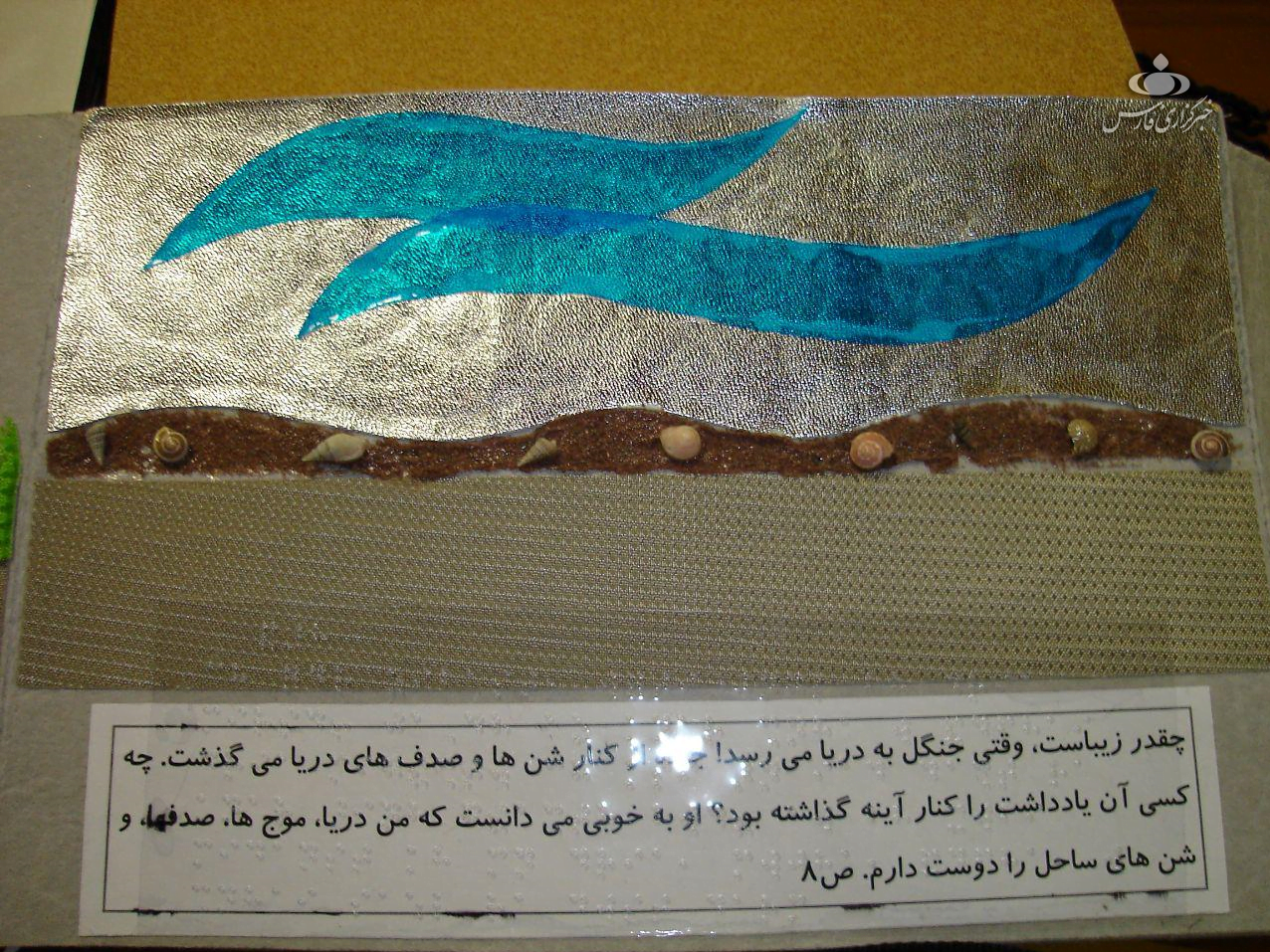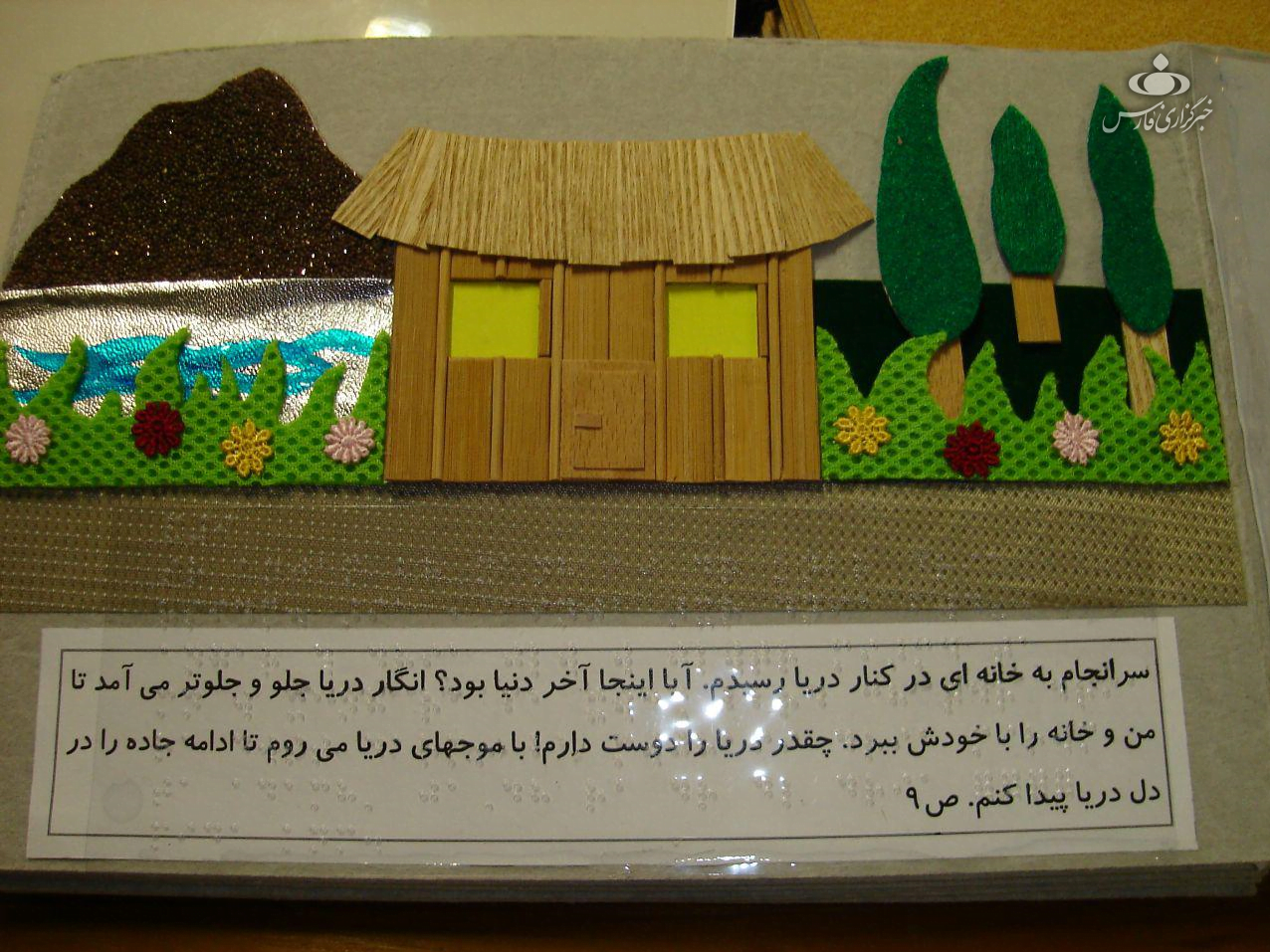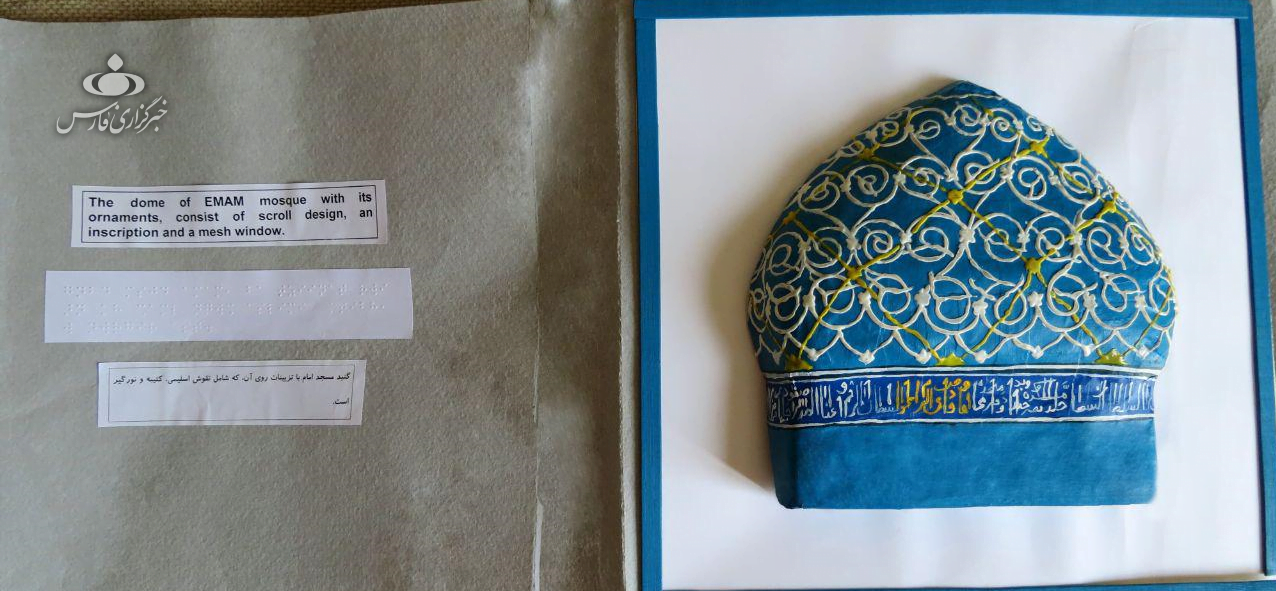Imagine you are going to illustrate a book that you have read.
Sima Shahrokhi, a senior expert in graphic design, has, through his efforts over the past 14 years, proven that children who are unable to see can create illustrations for their own books and get a deeper understanding or the world around them if trained.
This 35-year-old artist’s creative ideas in teaching the blind how to illustrate books show that if virtually challenged children’s sense of touch and manual skills are improved, they will get a better understanding the world around them and, as a result, will have a greater self-confidence in order to make their presence felt in this unknown world.
On the 210th anniversary of the invention of the braille system, Fars News Agency has conducted an interview with Sima Shahrokhi. The highlights of the interview follow.

I noticed a few cloth books in an exhibition marking the centennial of Hans Christian Andersen’s birth. I asked about them and found out that members of a special group of the Children’s Book Council had created those books. That was how I got familiar with those people. They made up a special group handling the affairs of children with special needs such as the visually challenged, the hearing impaired, the mentally handicapped, etc. Given my field of study, I entered the independent group tasked with attending to blind children and I began contributing to the creation of books.
After some time, I arrived at the conclusion that it would be wrong for me to sit at the council and make books with dotted images for visually challenged children because a touch book should not be only a book with raised pictures. I felt there is something missing here. So, I went to a school for the visually challenged and began to test my ideas and books with the help of those children.

When I started work, I found out that blind children were very keen on illustrating their books themselves. In fact, doing the illustration job from A-Z helped them to get experienced in that field and get to know other books as well. Therefore, I began to create books with the cooperation of visually challenged children.
Shoemakers’ Market: The World of My Discoveries
It would be interesting to know that I found a good alternative for cardboard during my work. I used a specific type of cloth called “Joorabgir” used in shoemaking industry. Joorabgir never gets torn. It is, in fact, something between cardboard and cloth, and has the properties of both.
“I got everything needed for illustrating books for visually challenged children from the shoemakers’ market at my own cost. Unlike ordinary clothes which do not have a good texture, the cloth and equipment used in shoemaking have a variety of raised textures and materials which give you a sense of “grass” when touched,” said Shahrokhi.
“Or there are some kinds of cloth in the shoemaking industry that give humans a feeling of “coldness” when touched. It feels as if you are putting your hands in water,” Shahrokhi added.
“I visited the shoemakers’ market several times and searched for and touched different types of cloth and fabrics, and learned a few points and used them in my books, which helped visually challenged children to discover new feelings,” Shahrokhi further said.
When Blind Children Become Book Illustrators
It is interesting to know that children themselves gave me ideas by touching different materials.
“Ma’am! This is very similar to such-and-such stuff,” they said.
It was very interesting for me and I noted it down. So, I chose the material upon agreement by the children. I believe we should allow children themselves to illustrate concepts.

“The Road” was one of the books I had created using different materials and fabrics. The book recounts the story of a small car which hits the road and embarks on a journey and passes through different settings such as mountains, forests, seaside, deserts, etc. I used a specific material and fabric to create each one of these atmospheres. Some time ago, I met a Danish lady who had come to Iran to visit the Children’s Book Council. She worked in a school for the visually challenged. When she learned about my method, she got surprised because the books they made for blind children were printed and contained raised images using the braille system.
I gave her a copy of the book “The Road” as a gift. Later she wrote to me in her email that “I hadn’t seen so many different textures and materials in my whole life and, so far, no one has ever used so many different types of materials. My students enjoyed the book very much. I congratulate you. This is a very successful method.”

One of the most creative books by Sima Shahrokhi is the book “My Father and I’s Trip.” It is the story of a visually challenged boy who goes to Isfahan with his father, but cannot have an understanding of all the beauty and grandeur of the ancient monuments there.
In order to explain the concept of the seven-colour tile, Shahrokhi has put two rails on one page and separate the two parts of the hand-made tile in such a way that they move on these two rails. When the blind child attaches these two parts together, a whole tile will be formed.
It is in fact the first book which introduces one of Iran’s historical monuments using the touch method. The book was displayed in exhibitions for children with special needs and was welcomed by the International Board on Books for Young People (IBBY).
Shahrokhi has also created the first touch copy of the “Book of Kings” written by renowned Iranian poet Ferdowsi.



